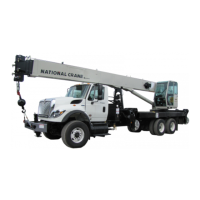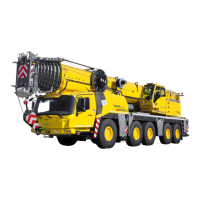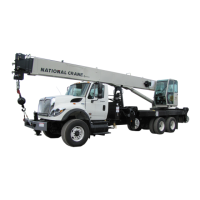Manitowoc Published 12-05-17, Control # 032-23 2-29
18000 OPERATOR MANUAL SAFETY INFORMATION
Crane Inspection
To aid in preventing harmful and damaging failure as
previously indicated, regular inspection for signs of
overloading in the following load bearing components is
required. Correct each defect found before placing the crane
into service.
• Boom
• Counterweight
• Backhitch
• Rotating Bed
• Wire Rope
• Pendants and Straps
• Hook and House Rollers
When equipped with hook rollers, it is recommended that
each hook roller assembly be inspected daily for any sign of
overloading, to include:
• Deformation of roller path
• Proper hook roller adjustment
• Deformation or cracks in hook roller hanger
• Bent hook roller shaft
• Damaged bearings
Transporting Crane on Barge
If it is necessary to transport the crane on a barge, ship, or
floating platform when dynamic conditions will be
experienced, the boom must be lowered onto a cradle (or
other support) and the crane’s boom, rotating bed, and
lowerworks must be secured against movement. If the crane
is equipped with a mast, the mast must be securely tied
down with guylines. Failing to take these steps can result in
shock load or side load damage to the boom and mast.
Barge Deck
L = Degrees of Machine List
(Maximum allowable is
specified in Capacity Chart)
FIGURE 2-11
C
L
Through Boom
Hinge Pins
Horizontal
L
